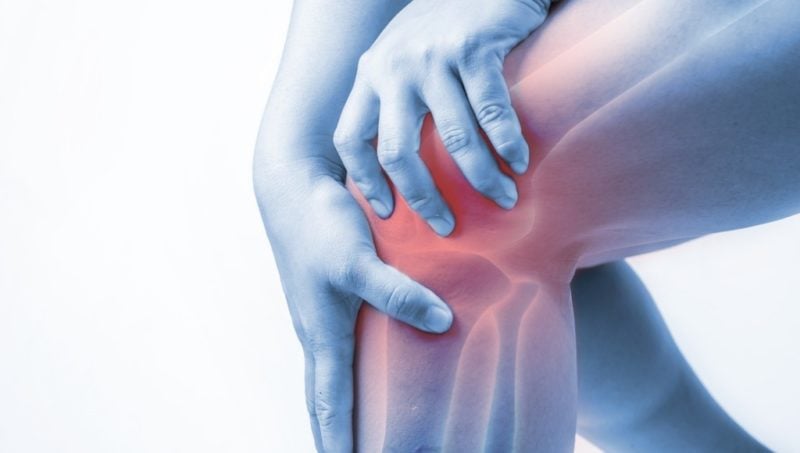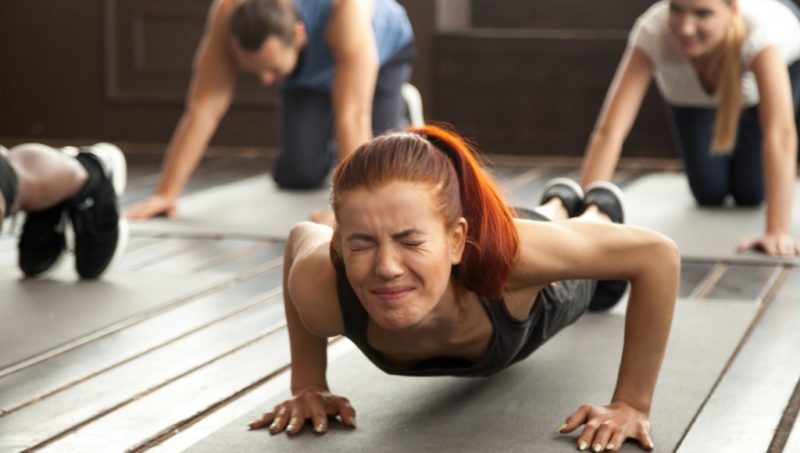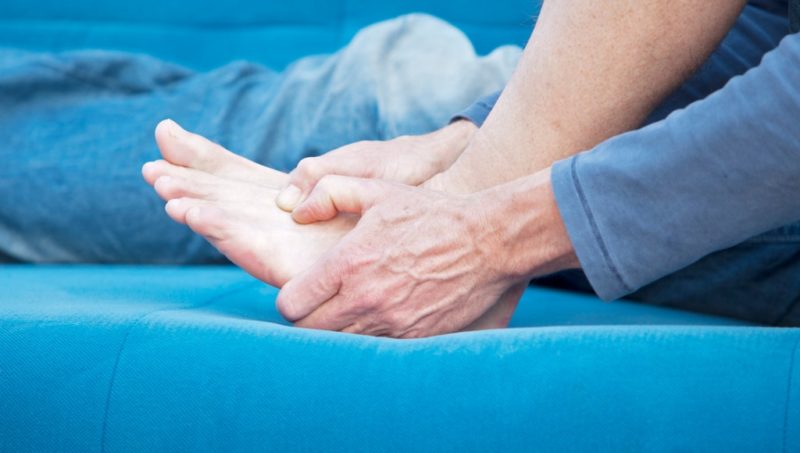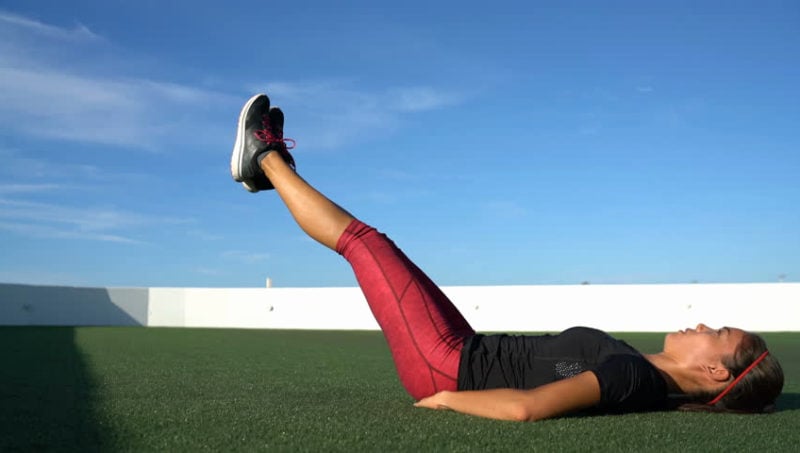4 Must-Dos Before Stem Cells or Surgery For Your Arthritic Knee

Feeling old before your time? Osteoarthritis of the knee can alter your life.
Have you noticed how much you have modified your life for your knee pain?
Have you stopped running? Playing sports? Have you stopped getting down on the floor or in the yard?
For many it starts almost insidiously. A little stiffness in the morning, an ache after a run, a little swelling after working in the yard.
But gradually, you have to stop an activity because of the pain or stiffness. The pain in your knees takes the fun out of it.
For those of us who injured our knees while playing sports, arthritis was the reward we had to look forward to for all the hard work, hours of exercise, surgery and rehab.
We can take healthy knees for granted.
We often take our athletic lifestyle for granted.
Arthritic knees change that.
You look to modify or avoid standing too long or walking too far.
Think about the activities you have eliminated.
Walks in the park or museums.
You used to run stadium steps, now you avoid any stairs.
Are there elevators? Even ramps, particularly going down the ramp can be problematic.
Ridiculous, you’re an athlete.
Don’t Settle.
Get those activities back!
So how do you recapture the mobility of your youth? Stem cells? Surgery?
My suggestion?
Start with correcting the wear and tear problem now, before you do anything else.
Start One Of Our Programs And Improve Your Health!
Here are Four Must-Dos
1. Get Sensible
There are two concepts in being sensible. If you look at the definition, one use of the term is Pragmatic, reasonable, rational and another use is readily perceivable.
To get sensible, you’ll need to be reasonable with regards to your arthritic joints.
Start to evaluate all the different activities and treatments you have done and how they have affected the health of your knees.
Your medications, supplements, stretching, strengthening, massage, therapy of all sorts.
What were you expecting to have these treatments do?
Was it rational or realistic?
Did it happen. If not why would you keep doing the same thing expecting a different result?
Sounds crazy to me and you’re not crazy.
Well…?
Get Sensible – Readily perceivable.
In this context, I’m talking about ‘use of your senses’.
Can you see it, touch it, or ‘feel’ it.
What ‘it’ is is a critical question.
How would you recognize ‘it’ when you sensed ‘it’?
You recognize pain. It’s a perception most of us are aware of and it’s about the only way people are in touch with their body’s senses in regards to exercise and movement.
Let’s talk pain.
Are you the “No Pain, No Gain” mentality or “Pain Means Stop” approach.
How and when you perceive pain matters. Arthritic pain varies depending on the activity. The pain from worn joints can change from a mild ache or soreness to sharp and stabbing depending on the activity.
Should you work through the pain or alter your activity or avoid it all together?
Pain is a warning sign.
Wear and tear pain says you are damaging your joint.
So if your criteria for doing an exercise is determined by whether you can tolerate the pain or not, you are probably damaging your joint.
One of the major problems hurdles you need to overcome is you don’t use your other senses.
Your eyes, your touch, your kinesthetic/proprioceptive feedback mechanisms to guide your exercises and training. These ‘senses’ can be developed to regain stability in your joints and heal the damage.
These sensations or ’feel’ you can develop at any age.
It takes time.
You will have to focus on subtle, quiet, allusive sensations you have rarely focused on.
The great news is that not only will the development of this more ‘sensitive’ side of you help heal your joints but it will also improve your athletic performance.
You’ll need a guide to develop this skill but you are worth it. Your senses can make the difference between an activity healing your joints or causing further damage.
Once you start to develop your senses and can access your posture and movement, you can then start to work on your muscle imbalances.
2. Fix Your Muscle Imbalance
Muscle imbalances are one of the major causes of wear and tear type of joint damage. Basically, the muscles that would normally protect and stabilize the joint are not working properly.
We are rarely aware of the imbalances.
They hide.
Often the muscle or tissue that is complaining (painful one) are the muscles that are being misused and overworked.
The imbalances are in the muscles of your feet, your thigh, your pelvis, your spine.
The muscles that are often in disuse are deep muscles you probably don’t know the names of. These are the muscles you need to develop in order to stop the wearing out of your joints.
The other problem is the big movement muscles get all the work and attention.
Many of the exercises you are doing are substituting these large movement muscles for the joint stabilizers.
This further creates an imbalance in your muscle development and only makes the problem worse. More damage to your joints.
There are clues that show the imbalances. Use your senses, Your hands, Your movement or positional sense. Your Eyes – use them to look at your alignment.
We Provide You With A Personalized Program!
3. Fix Your Alignment
The alignment of your knee tells you a lot.
Stand barefoot facing a mirror in a pair of shorts so you can see your thighs, knees and feet. Relax and let your body get into a ‘comfortable’ position.
Do your feet and knees point straight ahead? Does your knee bow in or out? Is there a twist or a giving in at the ankle? Flat feet? Do the muscles of your thigh and calf look the same?
If you try to straighten out your feet and knees so they ‘look’ straight with your eyes, how does it ‘feel’? Crooked, twisted, tight, painful, or better, more comfortable?
What you may not have been aware of is this disagreement between your senses. What looks straight or aligned doesn’t feel that way.
So what sense wins?
Well, when you are looking at them, your eyes might win but when you are not looking probably your ‘comfortable’ feel will win out. This will continue the wear process.
In order to maintain your alignment while you are not looking, you will need to change your subconscious ‘sensory’ system to recognize a more aligned position. This takes disrupting your current habit and guiding it to discover a more aligned option.
So where to begin to fix your knees? Might I suggest Your Feet!
4. Fix Your Feet
Your feet?
Yes.
But its my knees that hurt.
Your knees are at the mercy of two major joint complexes. Your lower leg complex (everything below your knee) and your hip complex (stuff above your knee).
In my experience, people spend a lot of time on their feet but very little time training their feet.
Your foot and ankle muscles are in a significant state of imbalance. If you wear shoes, orthotics, have pronated or flat feet, neuromas, etc., your lower leg complex is dysfunctional.
The muscle imbalances, the alignment problems manifest in you wearing out your knees as soon as your feet hit the ground.
As far as being ‘sensitive’ of your feet , you’ll probably only notice them when they stink or hurt. Those are sure signs you have ignored them for too long.
Start by introducing yourself to your feet and start focusing a good portion of your exercise time on developing your feet.
Now that you have “Come To Your Senses” the possibility of avoiding surgery and benefiting from stem cell injections is not only possible but very likely.
Take the time to look for Sensible Solutions – programs that develop your ability to access and utilize your senses to help you heal and improve your performance.
Are you ready to “Come to Your Senses”?
Ready to heal your knees and get the style back in your life? You can contact us!
Join us by following the link below to schedule a 20 minute “Mapping Your Injury Session” and get started today.
Click here to schedule a Free 20 minute video conference
Be Sensible My Friends,
Joe Millen PT MTC
Let Us Help You Improve Your Health!
Please let us know how we can help you improve your health, and one of our team members will get back to you soon.




